The Hindu Editorial Analysis- 7th December, 2020 | Additional Study Material for UPSC PDF Download
| Table of contents |

|
| 1. Culture and peace- |

|
| Context |

|
| 2. Tenuous tack- |

|
| 3. A mirage sold as a panacea for the unorganised sector- |

|

1. Culture and peace-
GS 2- Important International institutions, agencies and fora, their structure, mandate
Context
Recently, UN General Assembly discussed resolutions of the UN Alliance of Civilizations (UNAOC) on the ‘Culture of Peace’.
Calling On For Selectivity
(i) During the meeting, in a strong statement, India criticised the world body for what it called “selectivity” in seeking to protect Abrahamic religions — Islam, Christianity and Judaism — over others.
(ii) The previous resolutions of the UNAOC dating back to 2006 had repeatedly condemned the hatred against those religions by terming it “Islamophobia, Christianophobia and anti-Semitism”.
(iii) India claims that the world body however didn’t condemn attacks on other religious groups including Hindus, Sikhs and Buddhists, who have suffered terror strikes and seen their shrines destroyed in Afghanistan and Pakistan.
(iv) India at the UNGA statement welcomed the Kartarpur Gurudwara corridor agreement between India and Pakistan, but raised the concern over Pakistan government taking over the management of the Sikh shrine.
(v) India’s delegate also accused Pakistan of a “culture of hatred” against “religions in India” and fostering cross-border terrorism and said a culture of peace cannot exist until that is changed.
(vi) UNAOC was set up in 2005 to prevent polarisation between societies and cultures and to bridge differences between them.
(vii) Indian delegate condemned the UN’s selectivity under the aegis of the UNAOC and said that the world body only serves to further the theory of an inevitable “clash of civilisations” instead.
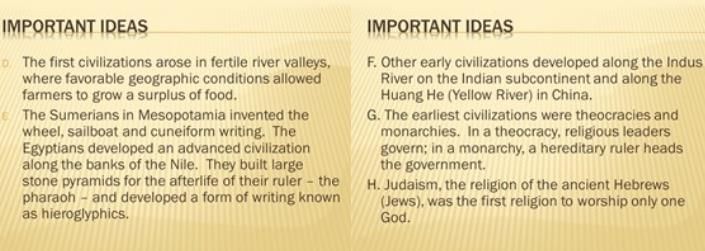
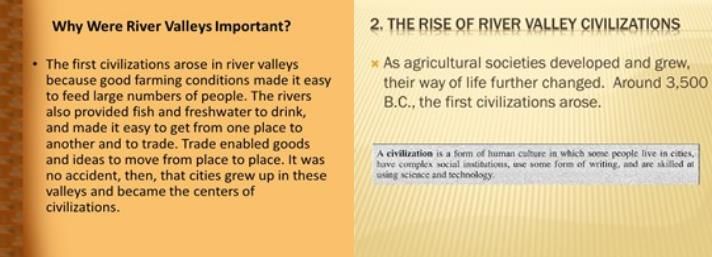
United Nations Alliance Of Civilizations
(i) The United Nations Alliance of Civilizations (UNAOC) is an initiative that seeks to galvanize international action against extremism through the forging of international, intercultural and interreligious dialogue and cooperation.
(ii) The Alliance places a particular emphasis on defusing tensions between the Western and Islamic worlds.
(iii) The initiative was first proposed by the Prime Minister of Spain at the 59th General Assembly of the United Nations (UN) in 2005. It was co-sponsored by the Turkish Prime Minister, Recep Tayyip Erdo?an.
(iv) On 14 July 2005, United Nations Secretary-General Kofi Annan formally announced the launch of the Alliance of Civilizations at the United Nations Headquarters in New York with the co-sponsorship of the Governments of Spain and Turkey.
Clash Of Civilizations
(i) The Clash of Civilizations and the Remaking of World Order is an expansion of the 1993 Foreign Affairs article written by Samuel Huntington that hypothesized a new post-Cold War world order.
(ii) Prior to the end of the Cold War, societies were divided by ideological differences, such as the struggle between democracy and communism.
(iii) Huntington's main thesis argues, "The most important distinctions among peoples are [no longer] ideological, political, or economic. They are cultural".
(iv) New patterns of conflict will occur along the boundaries of different cultures and patterns of cohesion will be found within the cultural boundaries.
Kartarput Corridor
(i) The Kartarpur Corridor is a visa-free border crossing and secure corridor, connecting the Gurdwara Darbar Sahib in Pakistan to the border with India.
The crossing allows Sikh devotees from India to visit the gurdwara in Kartarpur, 4.7 kilometres (2.9 miles) from the India–Pakistan border on the Pakistani side without a visa.
(ii) However Pakistani Sikhs are unable to use the border crossing, and cannot access Dera Baba Nanak on the Indian side without first obtaining an Indian visa or unless they work there.
(iii) The Kartarpur Corridor was first proposed in early 1999 by Atal Bihari Vajpayee and Nawaz Sharif, the prime ministers of India and Pakistan respectively, as part of the Delhi–Lahore Bus diplomacy.
(iv) The template that Kartarpur has given both sides is also worth considering for the format of other bilateral negotiations given that the talks have been immunised from both terror attacks and election rhetoric.
(v) The venue of the talks, at the Attari-Wagah zero point, lends itself to more successful outcomes too away from the glare of the media, without focus on arrangements for both parties.
(vi) The two sides can cross over, meet for the duration of talks and return after issuing a pre-arranged joint statement.
(vii) Other faith-based corridors – The obvious extension from this would be for having other faith-based “corridors” for Hindu, Muslim and Sikh pilgrims in both countries; this would be in addition to the list of 20 shrines (15 in Pakistan, five in India) that were negotiated under the 1974 Protocol on visits to Religious Shrines.
Analysis Of The Recent Meeting
(i) India’s concerns over the UN resolutions that portray only three religions as victims of religious hatred are completely valid, and it is important that they are broadened to include every community that faces religion-based violence.
(ii) It is also important that the government thwarts Pakistan’s particularly insidious attempts to create a controversy against India at this time, by pushing these resolutions as India steps to take its two-year seat at the UN Security Council.
(iii) New Delhi has been concerned by an increase in intrusive language from the UN bodies concerned as well, given that UNAOC issued a statement of “grave concern” over the Delhi riots in February this year that it said resulted in casualties of “mostly Muslims”.
(iv) India is keen to push back on the UNAOC and other UN arms, like the UN Human Rights Council, that have criticised the Citizenship (Amendment) Act.
(v) As it seeks to do all of this, however, the government must be careful about ensuring that in exposing the UN’s “selectivity” it doesn’t open a flank for a counter-charge against India.
(vi) The Citizenship (Amendment) Act, for example, has been criticised for offering fast-track citizenship to only a select group of religions, leaving out Muslims.
(vii) India cannot call for a culture of peace that stitches together an alliance of faiths, while Indian States bring laws that seek to make difficult inter-faith marriages.
Conclusion
(i) In the larger analysis, the force of India’s argument against the UN’s selective resolutions and non-inclusive language as well as the international efforts of adversaries such as Pakistan remains its own secular credentials enshrined in the Constitution and its pluralistic ethos.
(ii) India’s stand against UN’s selectivity on religions gains force from its secularism.
2. Tenuous tack-
GS 3- Indian Economy and issues relating to planning, mobilization of resources, growth, development and employment.
Context
The MPC’s policy of prioritizing growth over price stability is clearly fraught with risks.
MPC’s Decision
(i) Friday’s decision by the Monetary Policy Committee (MPC) of the Reserve Bank of India to maintain status quo on benchmark interest rates and continue with an accommodative policy stance for “as long as necessary” has been widely welcomed as being ‘pro-growth’.
(ii) With the MPC noting that the signs of economic recovery were still far from broad-based, the panel asserted that it was incumbent on policymakers to support a durable rebound.
Findings
(i) The MPC also flagged its expectation that inflation would continue to “remain elevated” through the coming months to average 6.3% — well above the 6% upper bound of its target range — through the second half of the current fiscal.
(ii) The RBI, which in October estimated retail inflation to range between 4.5% and 5.4% in the six-month period, has in just two months raised its projection for price gains by at least close to one percentage point.
(iii) Seen in this light, the MPC’s decision shows that the RBI is clearly prioritising growth over price stability for now.
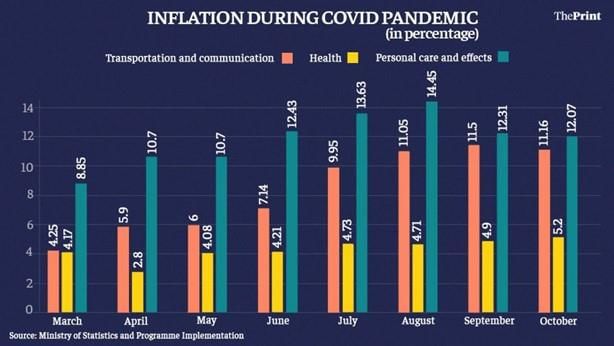
What is CPI?
(i) The Consumer Price Index (CPI) is a measure of the average change in the prices paid over a time period by urban consumers for an economy based on goods and services.
(ii) Usually, CPI is used as a macroeconomic indicator of inflation – a tool to inspect price stability and deflator in the national accounts.
(iii) CPI also helps understand the real value of wages, salaries, pensions, the purchasing power of the nation’s currency, etc.
(iv) In short, CPI helps to understand the standard of living in a country.
What is Retail Inflation Or Cpi Based Inflation?
(i) The rate of inflation is based on the consumer price index (CPI). The CPI tracks the change in retail prices of goods and services which are purchased for daily consumption.
(ii) The change in price index for a specific good or service at rural, urban level is called CPI-based or retail inflation.
How To Measure Inflation?
(i) To measure inflation, we estimate how much CPI has increased in percentage terms over the same period in the previous year. If prices have risen, it is called inflation.
(ii) To calculate CPI, multiply 100 to the fraction of the cost price of the current period and the base period.
Formula of CPI : (Price of basket in current period / Price of basket in base period) x 100
Insights On Mpc And RBI’s Take
(i) The MPC kept the RBI’s key lending rate, the repo rate, steady at 4%.
(ii) The central bank has slashed the repo rate by 115 basis points (bps) since late March to cushion the economy from the fallout of the COVID-19 crisis including the sweeping lockdowns to check the spread of the novel coronavirus.
(iii) Observing that risks to its estimates were “broadly balanced”, the RBI projected that growth would rebound in the first half of 2021-22 to between (+) 21.9% to (+) 6.5%.
(iv) “There is considerable optimism on successes in vaccine trials,” the MPC said in its statement.
(v) “Consumers remain optimistic about the outlook, and business sentiment of manufacturing firms is gradually improving,” it added.
(vi) With the MPC convinced that inflation would remain elevated, “barring transient relief in the winter months from prices of perishables”, the rate-setting panel said it found itself in a bind.
(vii) The RBI also announced a raft of liquidity management measures and steps to improve regulatory oversight of the financial system.
Reasons For The Inflation
(i) Supply-side bottlenecks had fuelled inflation.
(ii) Large margins were being charged to the consumer.
“Signs of recovery are far from being broad-based and are dependent on sustained policy support.”
What is The Concern?
(i) While the compulsion to ensure that monetary policy remains broadly supportive of an economy that is in recession as a fallout of the COVID-19 pandemic and accompanying lockdowns is understandable, the rate setting panel’s readiness to shrug off both persistently high inflation and its own outlook on prices is cause for concern.
(ii) Recent increases in the prices of iron ore, steel and transportation fuels also add to the worries that cost pressures are continuing to accumulate at a time when the economy is still well under water.
GDP Predictions
(i) The RBI has also, surprisingly, raised its GDP forecast for the full year. The central bank now expects the economy to shrink by only 7.5% in the 12 months ending in March, a full 2 percentage points shallower than the 9.5% contraction it had projected in October.
(ii) The forecast is predicated on a return to growth of 0.1% in Q3 and 0.7% in Q4.
(iii) The RBI also announced a raft of liquidity management measures and steps to improve regulatory oversight of the financial system.
Conclusion - Growth Over Stability
(i) It is this ostensibly sanguine outlook on the economy that is hard to square with the RBI’s stand according primacy to growth over price stability.
(ii) With the central bank prognosticating that, save some possible continued softening in the prices of cereals and transient easing of vegetable costs through the winter, other food prices would persistently remain at elevated levels, the MPC’s policy approach is clearly fraught with risks.
(iii) By laying the onus on supply disruptions, profiteering and taxes for the inflation spiral, the RBI is abdicating its primary mandate.
3. A mirage sold as a panacea for the unorganised sector-
GS 2- Government policies and interventions for development in various sectors and issues arising out of their design and implementation
Context
There are many discomforts among workers about new labour codes.
New Labour Code
Government of India passed four labour code bills:
(i) The occupational safety, health and working conditions code 2020
(ii) The industrial relations code 2020
(iii) The code on social security 2020
(iv) The code on wage 2019
These are made by merging of 29 central laws.
Main Provisions of Codes
(i) The reforms allow industrial flexibility in hiring and for retrenchment.
(ii) Under the industrial relation code, the government have allowed the firms up to 300 employees, to fire workers and shut the firm without prior government approval. Hitherto, prior approval had been required. Firms with more than 300 workers need to apply for approval. But, if the authorities do not respond to their request, the retrenchment proposal will be deemed to be approved. Before these new codes, labour laws required a 30- to 90-day notice period before retrenching “workmen”, which is a class of mainly shop floor workers.
(iii) In the case of manufacturing units, plantations, and mines with 100 or more workmen, also required government approval.
(iv) Under industrial relation code, Unions will now have to give 60-day prior strike notice.
(v) When proceedings are pending before a labour tribunal or the National Industrial Tribunal, workers cannot go on a strike for 60 days after they are completed.
(vi) These conditions apply to all industries.
(vii) Before these codes, workers could go on strike by giving between two weeks and six weeks of notice. Now, Flash strikes are outlawed.
(viii) In Occupational safety, health and working conditions code,2020, the state is empowered to exempt any new factory from the provisions of the code to create more economic activity and jobs.
(ix) This code fixes the maximum daily work limit at eight hours a day.
(x) Now, Women will be entitled to be employed in all establishments for all types of work and in case they are required to work in dangerous operations, the government may require the employer to have adequate safeguards in place before employment.
(xi) In code on social security, 2020, the first time it provides social security, including for organized, unorganized, gig and platform workers. According to this code, the government shall notify suitable welfare schemes related to provident fund, employment injury benefit, housing, education scheme for children, skill up-gradation of workers, funeral assistance and old age homes.
(xii) The government can tap corporate social responsibility funds (within the meaning of the Companies Act, 2013) or any other such source as may be specified in the scheme.
(xiii) The social security code, the setting up of a National Social Security Board to recommend to the central government suitable schemes for unorganised workers is provided.
(xiv) The code on wage 2019, consolidate four acts- payment of wages ct, 1936, minimum wage act, 1948, Payment of Bonus Act, 1965 and Equal Remuneration Act, 1976 — into a single code.
(xv) The Second National Commission on Labour (Ravindra Varma, 2002) suggested consolidating all labour laws into four codes.
(xvi) The Code will have the same definition of the term “worker”; but, a person employed in a supervisory capacity drawing up to ?15,000 will also be considered a worker.
(xvii) Before wage code, there is, Minimum Wages Act, which provides to fix minimum wage in employment which has more than 1,000 workers to be first included in the Schedule, and, thereafter, minimum wages will be fixed as per law.
(xviii) The new Code has dispensed with the necessity of having minimum workers and inclusion in schedule.
(xix) The central government will have the power to fix a floor wage. Once it is fixed, State governments cannot fix any minimum wage less than it.
What is The Matter
(i) In an announcement in an interview, the union labour minister claimed that new codes would universalise minimum wage and social security entitlements.
(ii) But these are not universally welcomed by workers and their organisations.
Problem with Universal Social Security
(i) The codes mandate benefits of Employees’ State Insurance (ESI) and Provident Fund (PF) only for workers belonging to establishments employing 10 workers or more.
(ii) This provision leaves out nearly 80% of all Indian workers mainly the informal sector, from the ambit of these benefits.
(iii) With this provision, many workers like, our domestic help, or the street vendor, or even the paperboy who delivers the morning newspaper, are all left out of reckoning of this universal coverage.
(iv) In 2016, the ESI covered 2.1 crore workers; this number increased to 3.6 crores by March 2019.
(v) The ESI employed around six doctors per one lakh beneficiaries in 2016, while the World Health Organization norm of 100 doctors.
(vi) So it is the need of the hour to increase doctor and paramedical strength.
(vii) As well as, the government in July 2019, reduced the employer and employee contribution in ESI from 6.5 per cent to 4 per cent.
(viii) The new codes seeking to cover 20% of all workers, the membership would further increase to around 10 crore workers: a three-time increase over the membership in 2019.
(ix) The available capacity of the hospitals and dispensaries would be inadequate.
ESI as Micro Based
(i) The ESI coverage follows the map of industrial growth in the country.
(ii) In industrialised states like Karnataka and Tamil Nadu, the ESI covered around 20% of the population as beneficiaries in 2016, while in Bihar this number was just 0.7%.
(iii) So the possibility of scaling up coverage is remote in Bihar, given the very low base at present
(iv) In new codes, the government also did away with some existing cess based welfare schemes.
(v) As in the Beedi Workers Welfare Board, covering an estimated five lakh home-based women workers.
(vi) Now, older beedi workers in the South Kanara district of the Madras Presidency credit the education schemes available to them to the Board, which they say, enabled their children to escape the bind of poverty.
(vii) The workers also had access to free dispensation in the hospitals run by the Board.
(viii) Now With the new codes, the beedi workers can lose these facilities.
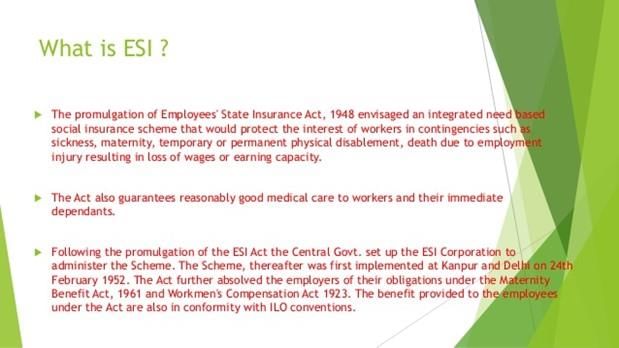 Problem With Minimum Wage
Problem With Minimum Wage
(i) According to the Union Labour Minister, at present only around 30% of all workers get covered under the various minimum wage schedules.
(ii) In the codes, the government include a floor wage covering all workers.
(iii) In 2019, the Labour Minister announced a floor wage of ?178 per day. Recently the Finance Minister announced ?2020.
(iv) On the other hand, the labour ministry’s expert committee on wage in 2019 also recommend 375 rupees per day.
(v) This announced wage is lower than the poverty line family expenditure estimated by the government-appointed Rangarajan Committee in 2011, corrected for inflation.
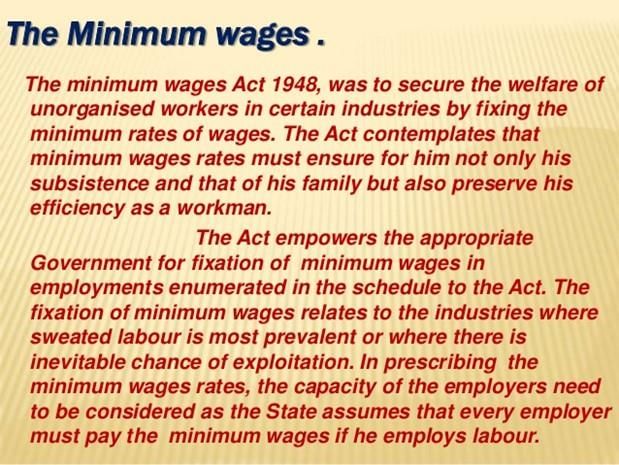
Conclusion
These codes, which include various measures like restricting the unions’ right to strike and relax norms for factory closure, serve to improve the ‘ease of doing business’ ranking instead of improving the conditions of employment.
|
21 videos|562 docs|160 tests
|
FAQs on The Hindu Editorial Analysis- 7th December, 2020 - Additional Study Material for UPSC
| 1. What is the relationship between culture and peace? |  |
| 2. How does culture contribute to peacebuilding? |  |
| 3. What challenges does the unorganized sector face in relation to the mirage of a panacea? |  |
| 4. How does the mirage of a panacea impact the unorganized sector? |  |
| 5. What is the significance of addressing the challenges faced by the unorganized sector? |  |















